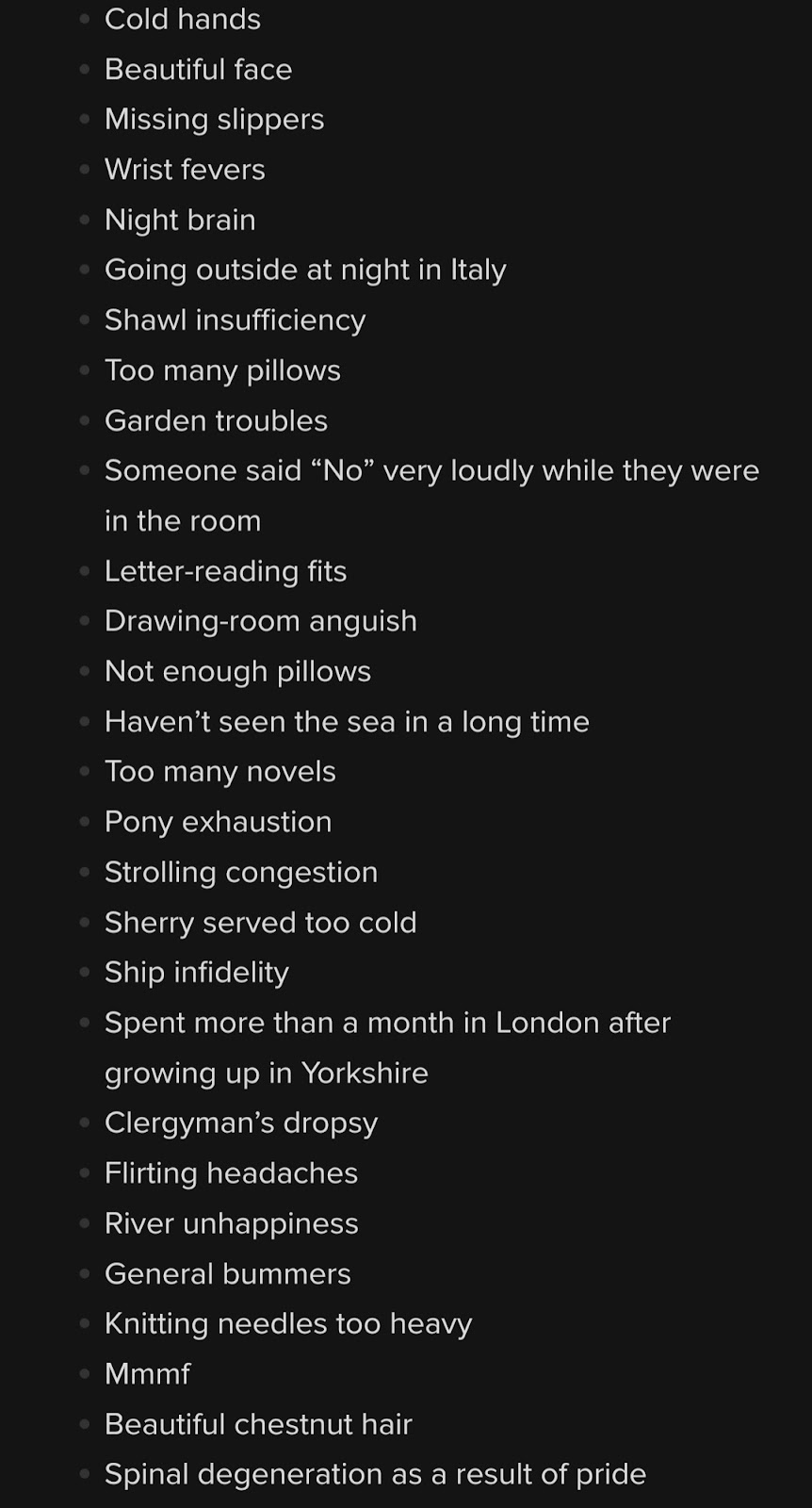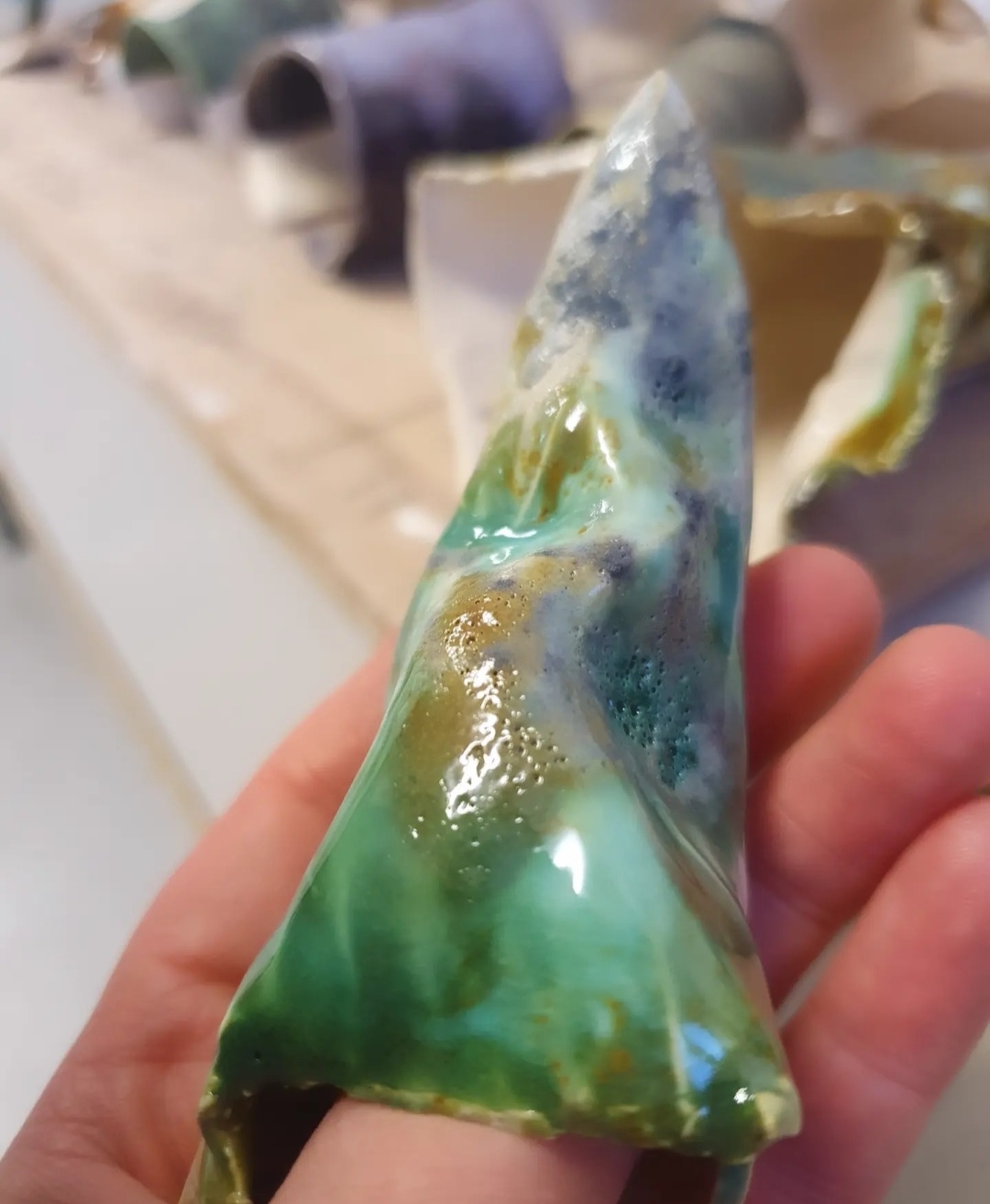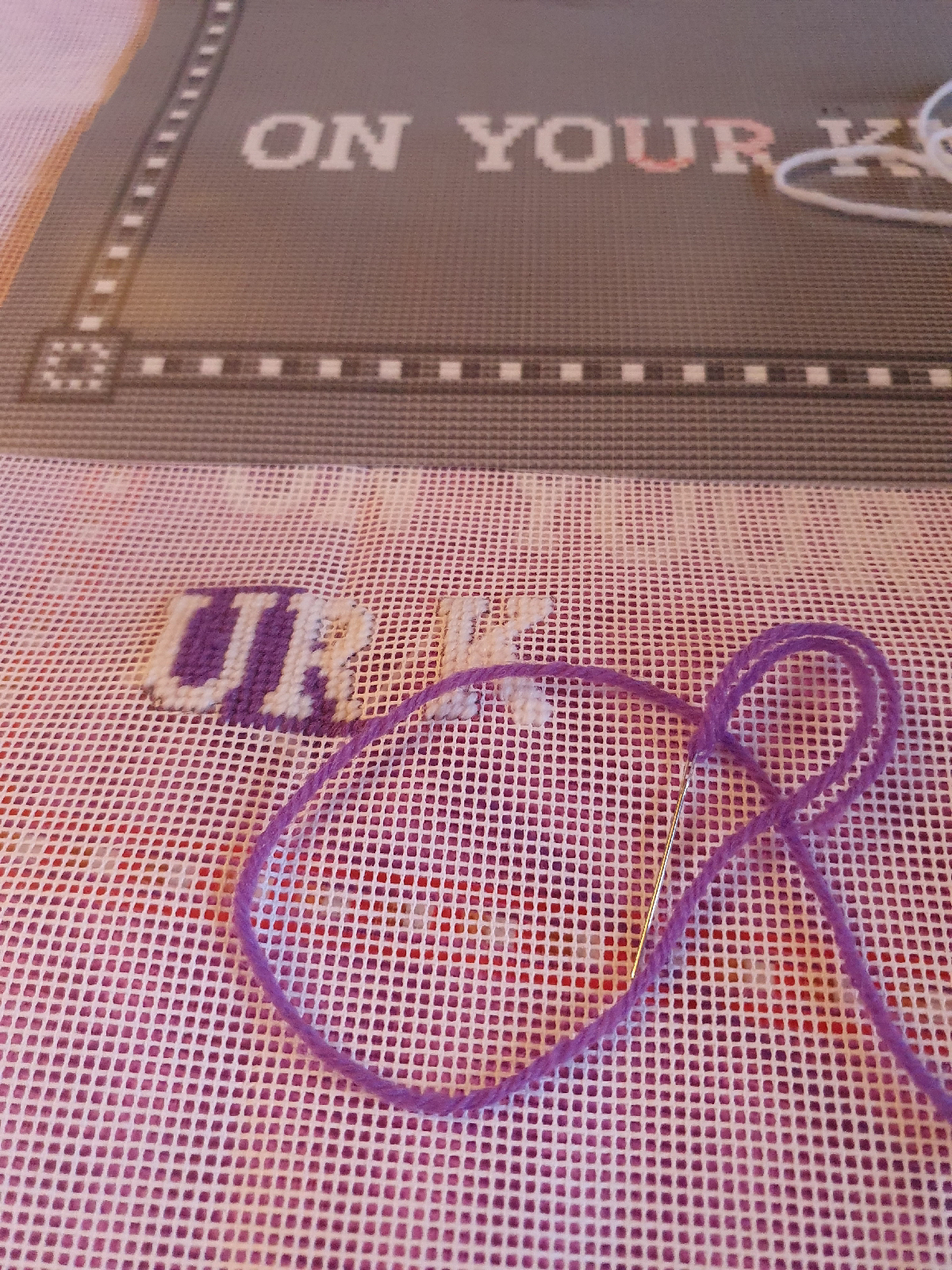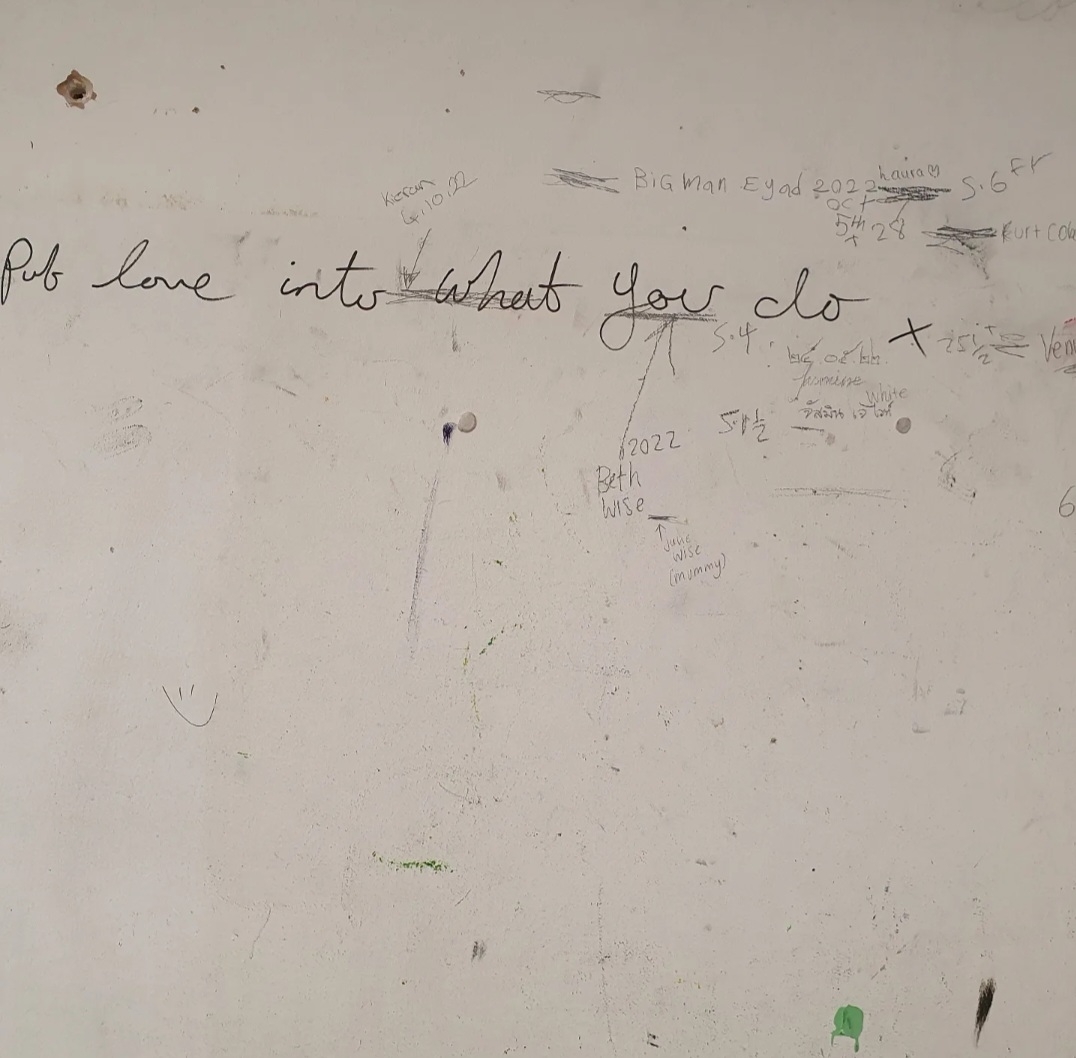Blog
-
Kneeler tapestry work
I have never tried cross stitch or tapestry before but it felt necessary to learn it for this project because it’s one of the crafts that are synonymous with Christian religious spaces. And that’s really the visual code I’m looking to recreate and play with.Through my research in learning about these techniques, I was fortunate enough to connect with some beautiful souls who shared their time and experience. I was really flipping gratefull for these meetings because I realise now that I’d been extremely naive in assuming it would be simple and quick to pick up these skills. Whereas they’re actually quite complicated disciplines to get your head around, especially for someone with the numerical version of dyslexia. Practising marking out and stitching was a steep and frustrating learning curve initially but after sticking with it (with much swearing and unpicking) I had a big click and felt really good for pushing through.After some experimentation, I decided to use tapestry fabric and tapestry wool.To speed up my making I chose to use a tent stitch rather than a cross stitch.I printed out the design I had made using open source cross stitch free software. Initially I planned to map out the design on the fabric but I found this confusing and so reverted to the more traditional technique of stitch counting.I marked out the middle of the piece and started on the first letter: R.It was really tricky at first, but once I had an anchor to work from my pace picked up. Setting the lettering and the border in symmetry and the right places place will of course be the trickiest part of the design. Although I am certain that stitching the ocean of purple will also have it’s challenge.Now I feel confident in my work, I am finding myself yo-yoing between finding the whole process quite meditative and feeling angry because I am deeply aware that this kind of handwork existed to occupy women; I have become the thing I am talking about and satirising.Only about 1 billion stitches to go. -
Poor Things
I went to see this yesterday because I loved The Lobster so much and it is truly brilliant; surreal, funny, erotic, controversial and optimistic.Bella is a reanimated corpse who has had the brain of a child placed in her skull. She develops at an accelerated rate and has many worldly adventures, including a profound sexual awakening. The whole film is an interesting take on the story of Frankenstein. There are lots of references to intergenerational trauma and how we are cut by our parents; Bella’s father has a face so disfigured by his own mad scientists fathers experiments that he looks like a Picasso painting.The construct of a child’s mind being in an adult body gives scope for looking at the world through fresh eyes unfettered by social norms/ constraints. There is a consistent return to Bella’s dream that things, people, society, can be improved, can be better. This isn’t always the case of course, but her endurance in this idea and it’s sweet innocence is endearing; this is just one example of the intricate ways relationships are built between the viewer and the characters.The visual and audio elements of the film have such a pronounced aesthetic, it is a pastel surreal Victorian parody of a universe filled with artwork including lots of stunning set and costume textiles. Both elements worked well together to create a powerful emotive effect.The absurdist humour helps to keep the whole thing as light as possible; with a dogs head stitched onto the body of a chicken and Bella’s steam powered carriage having a horse head glued to the affront of it as an affectation.It is delightful, I would totally recommend seeing it and it has inspired me to make some video/ audio pieces. -
Ideas about how the kneeler and the wimple will work in the gallery space
I have decided, after consultation with Tom, to hang to wimple from the gallery wall using a loop or hook.The idea is that it will look like a kind of limp empty shell or ghost. It will obscure and complicate the text which hopefully will encourage folk to stretch out the piece and read it. I am really keen to generate relationship and interaction.This decision feels both subversive and subtle. It robs the vestments of their institutional power and pomp; they will look floppy and daft, like a costume. It’s a playful choice and this makes the piece more accessible.The wimple being hung up like this is also a metaphorical deflation, piercing or “hanging up” of the toxic power constructs that rob nuns of so much including their autonomy, freedom and sexuality. It doesn’t feel like too much of a leap that this idea could be super imposed onto survivors of other kinds of abuse by the audience. I hope so because I want this conversation to be broader than just catholicism.My piece has been moved to above a radiator in the gallery space which is delicious serendipity because it looks like an altar. Or rather is a parody of an altar. Life mimicking art. I couldn’t have contrived it better and am so grateful for their choice to move it as they have.I hope that the wimple can be hung below the piece so that the audience can connect with it and read the verse as they kneel. This feels really cohesive. It will be a ritual; like a faux religious ceremony.I will go to the castle in the next week to experiment with where the wimple will fit without detracting from neighboring pieces.


























